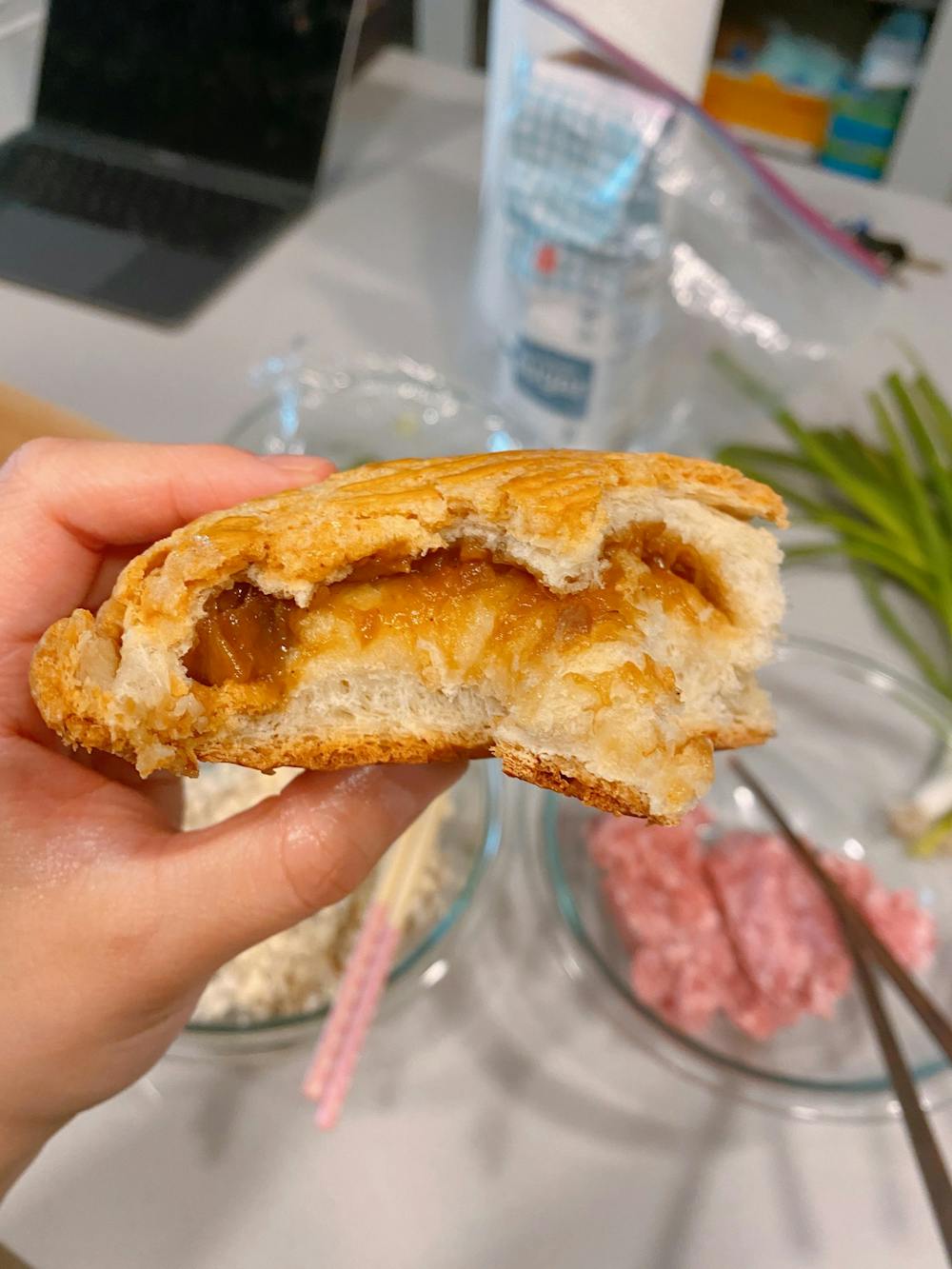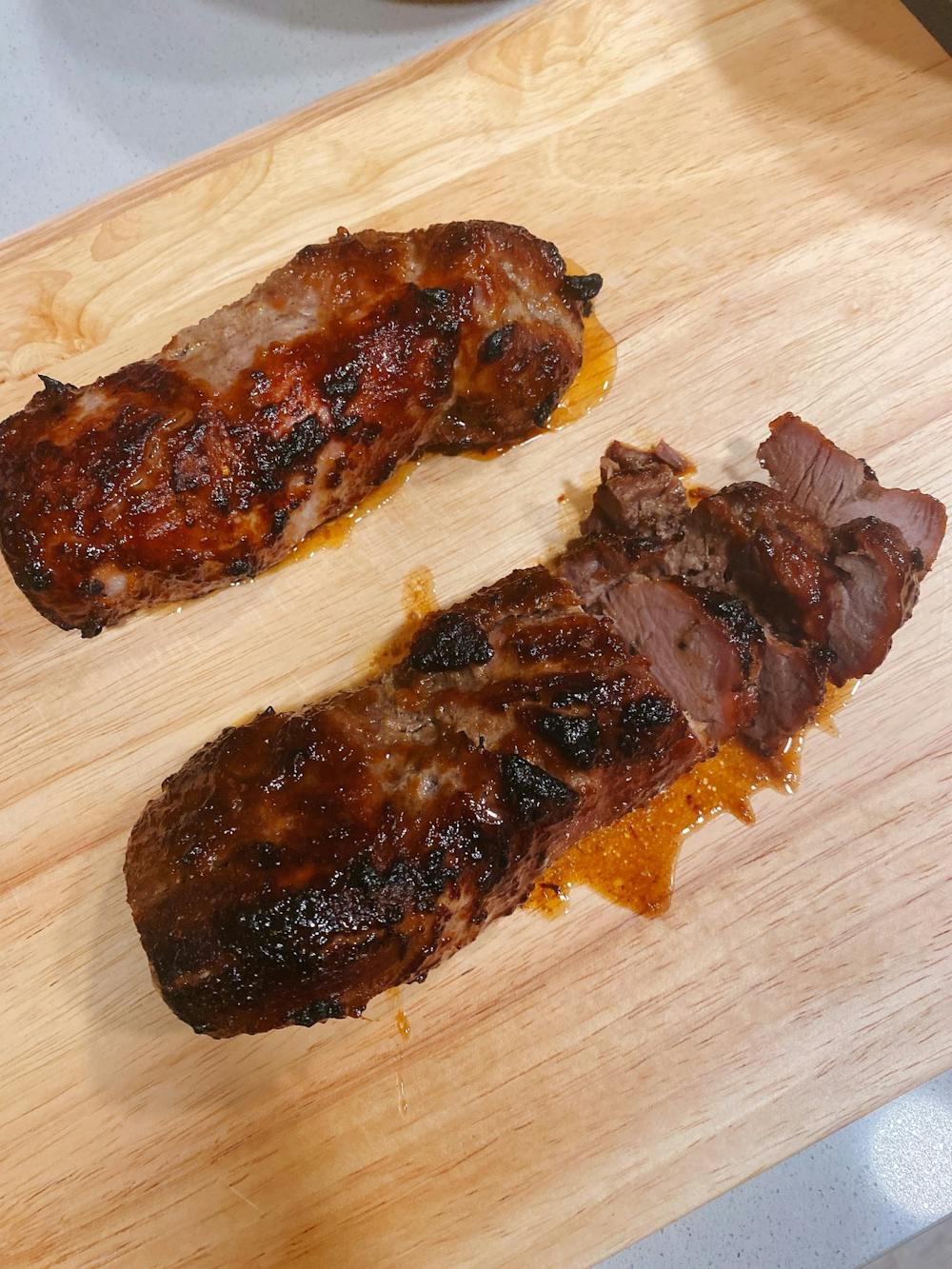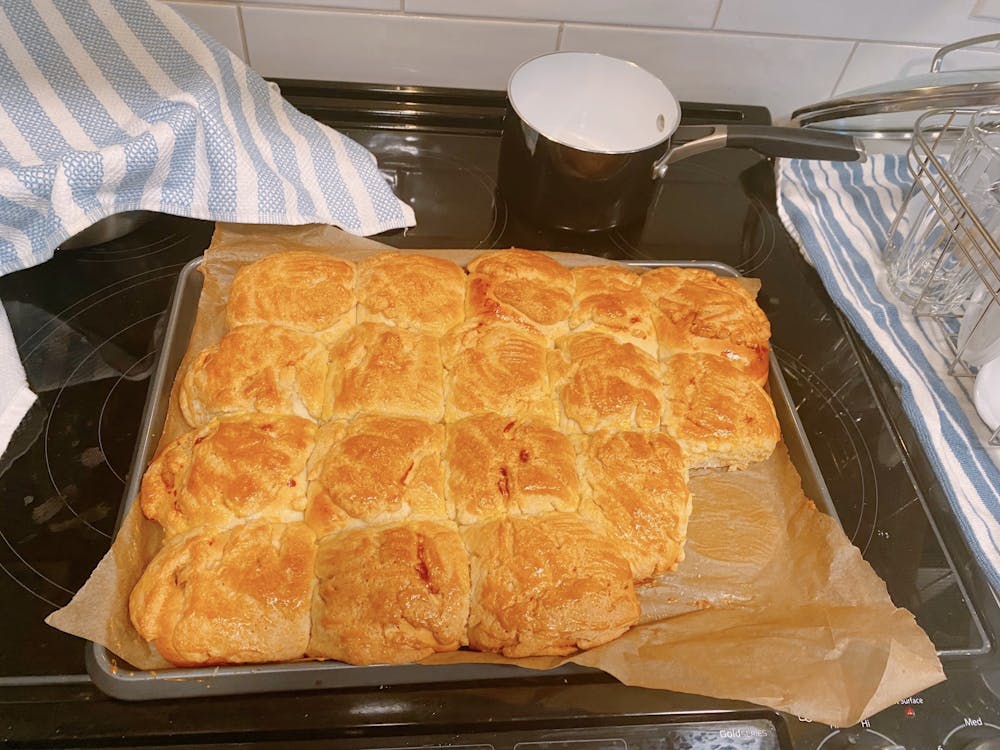I’ve never indulged food as a hobby like I did when isolating in Durham from the months of March to July. Ritualizing making food, celebrating it and eating lots and LOTS of it (sometimes out of sheer boredom) was one of the only things I could create an event or an occasion out of. As the recipes I attempted became increasingly time consuming and complex, my deep sense of homesickness drove me to explore and create flavours from home.The 19 in COVID-19 may as well signify the 19 pounds I gained in isolation.
There are two foods that never fail to provoke an overwhelming sense of nostalgia and yet never quite taste right when I’m away from Hong Kong. One of them, the pineapple bun (which contains no pineapple) always triggers a reflexive child-like glee. Designated as part of Hong Kong’s “intangible cultural heritage,” this delicious bun is soft and topped with a sugary golden crust (again, delicious) that forms a geometric “pineapple” pattern when baked. I’ve spent a lot of after-school moments peering with anticipation through various plastic bakery window dividers only to emerge, triumphant, clutching the bun with my soon-to-be-sticky fingers. The other, char siu (honey-marinated barbecued pork), reminds me of the bustle of the city, the claggy heat of summers and dinners at my grandmother’s.

If you have ever spent time sandwiched between skyscrapers in the busy, lively streets of Hong Kong, the sight of a brightly lit restaurant storefront displaying soy sauce chicken (豉油雞), roasted duck (燒鴨), crispy pork belly (燒肉) and char siu (叉燒) is a familiar and damn delicious sight. These are siu mei (燒味), the literal translation being “roast-flavored (meat),” roasted over an open fire or rotisserie oven resulting in the uniquely flavourful, barbecued, savoury deliciousness that is a staple of Cantonese food. I am not alone in my love for siu mei: the average Hong Konger eats siu mei once every four days.
Char siu is sticky, savory, sweet deliciousness with charred edges. The honey in the marinade forms a beautiful glaze over this garlicky barbecued pork. When we eat it together as a family, my grandmother always has a strong opinion about it—her 90 years of lived experience has qualified her for this.
I love char siu. So I decided to make it using this recipe. As I squatted in front of my oven staring at the glistening barbecuing pork, destined to become char siu, I was struck by the realization that generations of collective knowledge had created and perfected the motions I had amateurishly followed. And not to blow my own trumpet, but it was pretty bomb (disclaimer: this is entirely by my own standards–my grandmother would probably tell you that it was a tad dry and to do better next time).

Despite the many misconceptions that exist about Chinese food, Chinese culinary traditions are astounding: Dim Sum(點心) originated along the ancient Silk Road — which originated around 207 BC. That’s two hundred years Before Christ. Chinese food is so good that literal empires and dynasties have risen and crumbled, lost to the history books, while delicacies like the humble char siu bun (叉燒包) flourished and capture the hearts and stomachs of people the world over even today. (Side note: if you were picked on for eating “ethnic” food when you were younger–feel sorry for them, their parents let them eat cheese whiz.)
My family in Hong Kong has always had a tradition of getting together for lunches on Sunday. One of the restaurants we would frequent (Che’s—now closed, another dynasty lost to the history books) had perfected the glorious marriage of tender, flavorful and barbecued char siu inside a golden, crispy topped, soft pineapple bun. I had some leftover char siu so, naturally, I had to try to recreate it. My homemade pineapple char siu baos obviously couldn’t compare to ones made by professional chefs (maybe someday!) but I felt closer to home than I had in months.
Those of us brought up by Asian parents know that behind the stoicism that influenced our upbringings, food is perhaps the strongest love language that we have. “Have you eaten yet?” and “How are you?” (“食咗飯未呀?”) are interchangeable in Cantonese. My fondest memories of my Japanese mother are almost always tied to the kitchen and the dining table. Food is universally symbolic of nurturing and has been the foundation of many of my relationships: it represents the coming together of people, from Marketplace brunches where we tentatively forged new connections to our Tong Family Sunday lunches where petty squabbles and frustrations are set aside. Food is radical because it breaks boundaries, allowing different cultures to be shared, illuminated and celebrated. Food is a universal language imbued with stories from our day-to-day and millenniums past, and as I grow older it has become a way for me to show my love, just as my ancestors always have.
My grandmother rarely says “I love you” in as many words, but she will always save me the last piece of char siu.
Hannah Homma Tong is a Trinity senior. Her column runs on alternate Thursdays.
Get The Chronicle straight to your inbox
Signup for our weekly newsletter. Cancel at any time.

